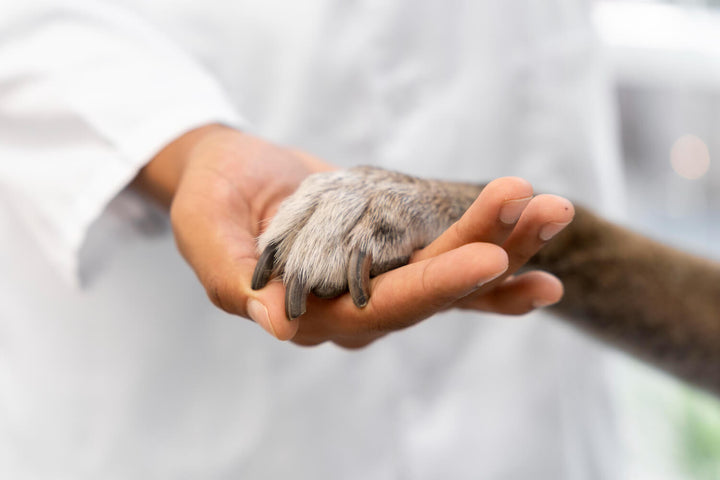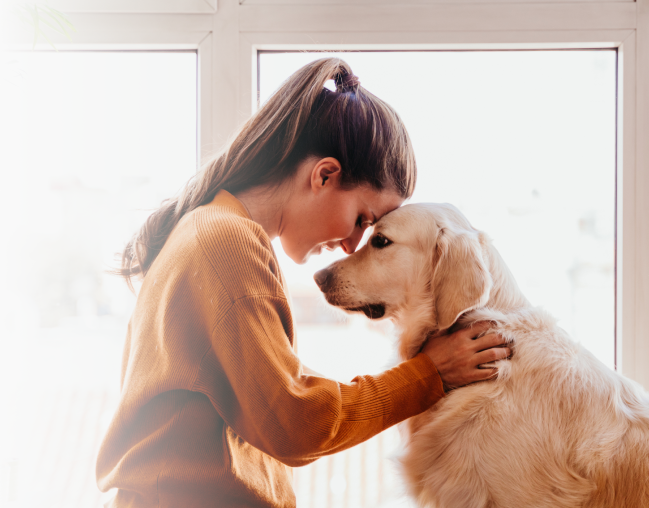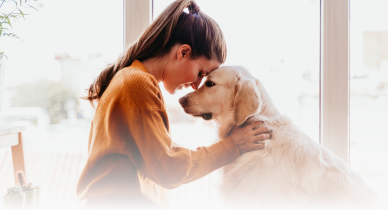Corgis, with their adorably squat legs and expressive faces, have stolen the hearts of dog enthusiasts worldwide. Known for their charming appearance and intelligent demeanor, Corgis are a beloved breed that have much more to offer than just their distinctive looks.
Did You Know these Facts about the Corgi?
-
Corgis, originally bred as herding dogs in Wales, have a natural inclination to nip at the heels of cattle. Despite their small size, they were invaluable on the farm.
-
Queen Elizabeth II was famously fond of Corgis and owned over 30 of them during her reign. Her love for the breed significantly boosted their popularity.
-
There are two primary Corgi breeds: the Pembroke Welsh Corgi and the Cardigan Welsh Corgi. The most noticeable difference is their tails – Pembrokes have short tails, while Cardigans have long, bushy ones.
-
Even the renowned physicist Albert Einstein had a Corgi named Chico, who was his loyal companion during the later years of his life.
- Corgis have achieved online stardom with countless viral videos showcasing their playful antics, making them one of the internet's favorite dog breeds.
Corgis consistently rank among the most popular breeds in the USA, and grabbed the #11 place in the 2022 AKC´s popularity list . Their charming appearance, high intelligence, and affectionate nature make them highly sought after as both family pets and working dogs.

Traits of the Corgi Breed
Overall Personality. Corgis are known for their big personalities. They are intelligent, alert, and often exhibit a sense of humor. They are outgoing and affectionate with their families, forming strong bonds. While they may be initially reserved around strangers, their friendly nature typically shines through once they feel comfortable.
Family Life. Corgis are excellent family dogs. They are good with children, often forming playful and protective relationships. However, their herding instincts might lead them to nip at heels or try to 'herd' family members, so they require appropriate training.
Physical Appearance. Corgis are small dogs with sturdy, well-proportioned bodies. They have erect ears, expressive eyes, and a fox-like appearance. Their coat comes in various colors, including red, sable, and tricolor, typically with white markings. Their most famous distinguishing feature is their short legs, a characteristic that adds to their charm.
Sociability. While Corgis can be reserved around new people, they are generally sociable dogs. Proper socialization from a young age is important to ensure they are comfortable around unfamiliar faces and other animals.
Average Sizes & Life Expectancy
- Height: 10 to 12 inches tall (25 to 30 cm)
- Weight: 22 to 31 pounds (10 to 14 kg)
- Life Expectancy: Around 12 to 15 years
Detailed Description of the Corgi Breed
Physical Appearance. These small to medium-sized dogs have a sturdy and well-proportioned build. Their most distinctive feature is their short legs, making them look like they're almost hovering above the ground. They stand about 10-12 inches tall at the shoulder and typically weigh between 22-31 pounds.
Their head is proportional to their body with expressive eyes that convey intelligence and curiosity. Their ears are erect, and their muzzle is slightly tapered, giving them a fox-like expression. Corgis have a short, water-resistant double coat with a straight, dense outer layer and a soft, insulating undercoat. Coat colors can vary, but red, sable, and tri-color (black, tan, and white) are common, often with white markings.
Temperament and Personality. Corgis are often described as big dogs in small bodies. They possess a lively and alert disposition, always ready for action. Intelligence is a hallmark of their personality, making them quick learners. They have an independent streak, but their affectionate nature makes them loyal and loving companions.
Corgis are known for their strong herding instincts. This can manifest in amusing ways, like herding family members or even small pets. However, early training and socialization can help curb this behavior and ensure they get along well with others.
One of the standout traits of Corgis is their sense of humor. They often engage in playful antics and have a knack for making their families laugh. They're outgoing with their loved ones but can be reserved around strangers, making them excellent watchdogs.
Adaptability. Corgis are highly adaptable dogs. They are equally content in an apartment or a house with a yard, as long as they receive sufficient exercise and mental stimulation. Their small size makes them suitable for urban living, but they do need daily walks and playtime to stay happy.
Their adaptability extends to various climates, as their double coat helps them regulate body temperature. However, owners should be cautious about extreme heat because of their short legs and susceptibility to overheating.
Care Guidelines. Corgis are an active breed and require regular exercise to prevent boredom and weight gain. Daily walks and play sessions are essential. Their herding instincts mean they thrive on mentally stimulating activities like puzzle toys.
Corgis have a shedding season where their thick double coat sheds profusely. Regular brushing during this time is crucial to manage shedding. They are generally low-maintenance in terms of grooming, requiring a bath only when necessary.
A balanced diet that matches their age, activity level, and size is essential. Portion control is vital, as Corgis can be prone to obesity.
Training Strategies. Corgis are intelligent and eager to please, making them responsive to training. Early socialization is crucial to ensure they are well-adjusted around other dogs and people. Positive reinforcement methods work best, as Corgis may become stubborn with harsh training techniques.
Their herding instincts can lead to nipping, which should be addressed early to prevent it from becoming problematic. Obedience training is essential to teach them commands and ensure they are well-behaved family members.
Notable in History and Pop Culture. Corgis have a rich history, originally hailing from Wales. They were used as herding dogs, known for their ability to handle cattle despite their small size. This herding background is still evident in their behavior today.
One of the most famous Corgi enthusiasts was Queen Elizabeth II of England. She owned numerous Corgis during her reign, bringing them into the international spotlight. Her love for the breed significantly contributed to their popularity.
In pop culture, Corgis have become internet sensations. Countless viral videos showcase their playful antics and charming personalities, earning them legions of fans worldwide. They've also made appearances in movies and TV shows, further endearing them to the public.
What to expect when living with the Corgi Breed
Personality. Corgis are known for their big personalities. They are intelligent, alert, and often described as the "clown" of the dog world due to their playful antics. Expect plenty of smiles and laughter with a Corgi around. They form strong bonds with their families and are known to be affectionate and loyal.
These dogs have moderate to high energy levels so daily exercise is a must to keep them happy and prevent behavioral issues. They thrive on activities like fetch, agility training, and even herding trials if you're up for it.
Remember that Corgis have a strong herding instinct. They may try to herd children, other pets, or even you by nipping at heels. Early training and socialization can help manage this behavior.
Ideal Environment. Corgis can adapt well to various environments, from city apartments to suburban homes with yards. However, they do best in homes where they receive attention and exercise. They are people-oriented and should not be left alone for extended periods.
Maintenance Level. Corgis have a moderate grooming requirement. Their double coat sheds seasonally, and during this time, you'll need to brush them regularly to manage the shedding. Besides that, their grooming needs are relatively low. However, pay attention to their nails, as they can become overgrown if not kept in check.
Overall Health Expectations and Best Health Tests for the Corgi Breed
Health Considerations. Corgis are prone to hip dysplasia, which can lead to arthritis and mobility issues. They are also susceptible to intervertebral disc disease (IVDD), a condition affecting their spine. Progressive Retinal Atrophy (PRA) is an inherited eye disorder that can lead to blindness. Obesity is a concern, so proper diet and exercise are crucial.
Recommended Health Tests.
- Hip Evaluation - Hip dysplasia is a common issue in Corgis. Regular hip evaluations can detect any problems early, allowing for intervention and management.
- Eye Examination - Regular eye examinations can catch conditions like PRA in their early stages, enabling treatment or management.
- Intervertebral Disc Disease Screening - If your Corgi shows signs of back pain or mobility issues, consider screening for IVDD, especially if they exhibit symptoms like reluctance to jump or pain when handled.
- Thyroid Function Testing - Hypothyroidism can affect Corgis, so periodic thyroid function tests are beneficial for early detection and management.
- Obesity Prevention - Regular vet visits to monitor weight and discuss dietary needs are essential to prevent obesity, which can lead to various health issues.
Best Nutrition, Diet & Supplements for the Corgi Breed
Nutrition and Diet. Corgis are prone to obesity, so feeding them a balanced diet is essential. Opt for high-quality commercial dog food or prepare homemade meals under the guidance of a veterinarian. Ensure that their diet includes the right balance of protein, carbohydrates, and fats.
They have a tendency to overeat, which can lead to weight gain. Divide their daily food allowance into two or more meals to prevent overindulgence. Be mindful of portion sizes and consult your vet for guidance on the right amount to feed.
Protein is essential for muscle maintenance and overall health. Look for dog food that contains quality sources of protein like chicken, beef, or fish. The protein content should be around 18-25% of their diet.
Carbohydrates provide energy for their active lifestyle so opt for dog food featuring whole grains like brown rice or sweet potatoes. Carbs should make up about 30-50% of their diet. Incorporate fruits and vegetables like carrots, green beans, and apples into your Corgi's diet for added nutrients and fiber. However, be cautious with fruits high in sugar.
Hydration is Key. Ensure your Corgi always has access to fresh, clean water. Proper hydration is vital for digestion, temperature regulation, and overall vitality.
Supplements. While a balanced diet should provide all the necessary nutrients, some Corgis may benefit from supplements. Glucosamine and chondroitin supplements can support joint health, which is essential due to their susceptibility to hip dysplasia. Always consult your vet before adding supplements to their diet.
Foods to Avoid. Some foods can be harmful to Corgis. Avoid feeding them chocolate, grapes, raisins, onions, garlic, and anything containing xylitol, as these can be toxic. Additionally, limit their intake of high-fat or fried foods to prevent weight gain.
Grooming Requirements for the Corgi Breed
Coat Maintenance and Shedding. To control shedding, brush your Corgi at least two to three times a week. Use a slicker brush or an undercoat rake to reach the dense undercoat. During heavy shedding seasons, daily brushing may be necessary.
Paw Care and Hygiene. Check their paw pads regularly for signs of damage or injury, especially if they are active outdoors. Trim their nails every few weeks to prevent overgrowth, which can lead to discomfort and posture issues.
Ear and Eye Care. Clean their ears regularly and check for signs of infection, like redness or odor. Wipe the corners of their eyes to prevent tear staining.
Bathing Frequency. Bathe your Corgi every two to three months or when they get dirty. Frequent baths can strip their coat of natural oils. Use a dog-specific shampoo and ensure thorough rinsing to prevent skin irritation.
Exercise Required for the Corgi Breed
Corgis need at least 30 to 60 minutes of exercise daily. This can include brisk walks, playtime in a secure yard, or interactive games like fetch.
Corgis are intelligent dogs, so mental stimulation is equally important. Puzzle toys, obedience training, and agility exercises can engage their minds. They have a herding instinct, so activities like herding trials or obedience competitions can be a great way to fulfill their natural tendencies.
Due to their propensity for obesity, it's crucial to monitor their weight and adjust their exercise routine accordingly. Avoid overfeeding and provide healthy treats during training.
Training Tips for the Corgi Breed
Training Corgis can be both enjoyable and challenging due to their strong-willed nature.
Do…
- Use positive reinforcement techniques like treats, praise, and play to motivate and reward good behavior.
- Begin socializing your Corgi puppy early to ensure they are well-adjusted and comfortable around other dogs and people.
- Be consistent with commands and expectations. Corgis respond well to routines.
- Corgis can be stubborn, so patience is key. Keep training sessions short and engaging.
- Challenge their intellect with puzzle toys and games that require problem-solving.
Don't…
- Use physical punishments or yelling as it can damage the trust between you and your Corgi.
- Skip training; consistency is vital. Skipping training sessions can lead to behavioral issues.
- While treats are useful for training, be mindful not to overfeed. Use small, low-calorie treats.
- Push your Corgi too hard, especially during puppyhood. Overexertion can harm their developing joints.
- Forget about mental and physical health. Corgis require both mental and physical stimulation, so neglecting exercise can lead to boredom and destructive behavior.
The Corgi Breed is Suitable For
Corgis can adapt to apartment living if provided with sufficient exercise and mental stimulation. However, they truly shine in homes with yards where they can run and play freely.
Corgis are excellent family dogs. They are known for their affection and loyalty, making them great companions for children. Their herding instinct may lead them to try and "herd" kids, which can be endearing. They generally get along well with other pets, especially if introduced early and properly socialized. Their friendly and adaptable nature helps them integrate into homes with existing animals.
Corgis are a good match for active individuals or families who enjoy outdoor activities. They love to go for hikes, play fetch, or engage in agility sports.
The Corgi Breed is Not Suitable For
Corgis have high energy levels and need regular exercise. They may become overweight and develop behavioral issues if not given the opportunity to burn off energy.
Their thick double coat makes Corgis prone to overheating in hot climates. If you live in such an environment, you must take precautions to keep them cool.
In small apartments or homes without access to a yard, Corgis may feel cramped and frustrated. Adequate exercise and mental stimulation are essential in such situations.
Famous Corgi Owners
-
Queen Elizabeth II - Perhaps the most famous Corgi owner in the world was Queen Elizabeth II. Her love for Pembroke Welsh Corgis began at a young age, and she owned several throughout her reign. Her Corgis even made appearances in James Bond films.
-
Rachael Ray - The celebrity chef and television host Rachael Ray is a Corgi enthusiast. She has a Corgi named Isaboo, who has made guest appearances on her show.
- Stephen King - The renowned author Stephen King is a fan of Pembroke Welsh Corgis. His Corgi, Molly, often accompanies him on book tours.
Accomplishments of the Corgi Breed
Corgis were bred for herding cattle. Their short stature allowed them to nip at the heels of cattle without getting kicked. Their herding skills have been well-documented and even today are admired by farmers.
They have a strong presence in pop culture. They've been featured in numerous films, books, and television series. Notably, "The Queen's Corgi" is an animated film that pays homage to Queen Elizabeth II's beloved Corgis. Many Corgis have gained fame on social media platforms like Instagram, where their adorable photos and quirky personalities have atrracted large followings.
Despite their short legs, Corgis excel in dog sports like agility and obedience. Their intelligence and agility have allowed them to achieve remarkable feats in these competitions.

The History of the Corgi Breed
The history of the Corgi breed is a fascinating journey that dates back several centuries. These charming dogs have a rich heritage that encompasses their creation, purpose, and evolution over time.
Creation and Purpose. Corgis, specifically the Pembroke Welsh Corgi and the Cardigan Welsh Corgi, originated in Wales, a country known for its rolling hills and picturesque landscapes. These two breeds share a common ancestry but have distinctive characteristics that make them unique.
The Pembroke Welsh Corgi's history can be traced to the 10th century when Flemish weavers migrated to Wales, bringing with them small herding dogs. These dogs were crossbred with local breeds, resulting in a sturdy, low-set dog with excellent herding abilities. Their primary purpose was to drive cattle by nipping at their heels, thanks to their small stature, agility, and innate herding instincts. The name "Pembroke" is derived from the Welsh word "Penbroke," which means "headland" and references the region where they thrived.
On the other hand, the Cardigan Welsh Corgi has a more ancient lineage, dating back over a thousand years. They were brought to Wales by Celtic tribes, and their heritage is linked to the Teckel family of dogs, which includes the Dachshund. Cardigans were used as cattle drovers and farm guardians, sporting a distinctive long tail, which sets them apart from their Pembroke counterparts. Their name "Cardigan" signifies their association with the Cardiganshire region of Wales.
Early Roles and Evolution. Over the centuries, both Corgi breeds played an integral role in Welsh farming life. Their low stature allowed them to avoid the kicks of cattle, and their sharp minds made them exceptional herders. They became cherished members of farming households, known for their loyalty, intelligence, and unwavering work ethic.
The fame of Corgis transcended the Welsh borders when King George VI of England acquired a Pembroke Welsh Corgi named Dookie in 1933. This marked the beginning of the breed's association with British royalty. Queen Elizabeth II, who succeeded King George VI, became an avid enthusiast of the breed. Under her reign, Corgis achieved international recognition and became synonymous with the British monarchy.
Changes and Modern Impact. Today, Corgis are cherished pets, renowned for their affectionate nature, intelligence, and distinctive appearance. While they've largely retired from herding duties, their herding instincts and boundless energy persist, making them exceptional companions for active families. They've also found success in various dog sports, showcasing their agility and obedience skills.
In conclusion, the history of Corgis is a testament to their remarkable journey from humble herders in the Welsh countryside to beloved pets worldwide. Their enduring charm and unique history make them a breed cherished by all who have the pleasure of sharing their lives with these delightful dogs.
The Corgi Breed Standard
The Corgi belongs to the Herding Group according to the American Kennel Club (AKC). This group includes breeds originally developed for herding livestock, and Corgis are no exception. Their herding instincts are strong, and they were historically used for cattle herding.
The American Kennel Club provides a detailed breed standard for the Corgi, which serves as a guideline for breeders, judges, and enthusiasts. There are two recognized breeds: the Pembroke Welsh Corgi and the Cardigan Welsh Corgi. The Pembroke stands about 10 to 12 inches at the shoulder and weighs between 25 to 30 pounds, while the Cardigan is slightly larger, standing 10.5 to 12.5 inches and weighing 30 to 38 pounds.
The national breed club for Corgis in the United States is the Pembroke Welsh Corgi Club of America (PWCCA). Their website, www.pembrokecorgi.org, provides valuable information about the breed, including breeder directories and rescue contacts.
General Appearance
Head, Muzzle, Nose. The Corgi's head is foxy in shape, with a slightly rounded skull. Their expressive eyes are medium-sized, almond-shaped, and dark, contributing to their intelligent and alert expression. Ears are erect, proportionate to the head, and often stand at attention, showing their curiosity. Their muzzle is neither too long nor too short, creating a balanced appearance. The nose is typically black for tri-color and black-headed tris, while red-headed tris have brown noses. These colors harmonize with their coat shades.
Teeth. They have a ‘scissor’ bite, where the upper and lower teeth meet evenly. Their dental structure is strong and designed to assist in herding and gripping, aligning with their historical working roles.
Neck. The neck is muscular, well-set, and arched, adding to their regal carriage. It gracefully flows into the shoulders and back, showcasing their elegant posture.
Body. They boast a well-balanced, sturdy body. Their chest is broad and deep, providing room for a robust heart and lungs. Their back is level and straight, allowing for efficient movement during herding tasks. Their compact build is a testament to their agility and strength.
Tail. They can have either a docked tail or a natural one, depending on the breed standard. Pembrokes often have docked tails, while Cardigans have long, bushy tails. Both tail types are carried with pride and often seem to have a mind of their own.
Coat. Their double coat comprises a soft, weather-resistant undercoat and a coarser outer coat. The coat can be short to medium in length, providing insulation and protection against the elements. Corgis come in various colors, including red, sable, and tri-color (black, tan, and white). These coat variations add to their charm.
Size. Corgis come in two distinct breeds: the Pembroke Welsh Corgi and the Cardigan Welsh Corgi. The Pembroke stands about 10 to 12 inches at the shoulder and weighs between 25 to 30 pounds. In contrast, the Cardigan is slightly larger, standing 10.5 to 12.5 inches and weighing 30 to 38 pounds. These compact sizes make them versatile working dogs and delightful companions.
Gait. Corgis exhibit a smooth, effortless gait. Their sturdy legs, well-angled shoulders, and strong hindquarters allow for efficient movement. This breed's unique physique enables them to cover ground quickly and nimbly, reflecting their herding heritage.
Reputable Breeders
For those seeking a well-bred Corgi, there are reputable breeders who prioritize health, temperament, and the breed's standard. Here are a few notable breeders:
Top Shelters for Adoption
Adopting a dog can be a rewarding experience. Here are a few shelters where you might find a Corgi in need of a loving home:
Top 5 Frequently Asked Questions & Answers about the Corgi Breed
What is the difference between Pembrokes and Cardigans?
Both breeds are similar in appearance but have differences in tail length and ear shape. Pembrokes typically have shorter tails, while Cardigans have long, bushy tails.
Are Corgis good with children and other pets?
Yes, they're generally good with children and other pets, especially if they are socialized from an early age.
Do Corgis shed a lot?
Yes, they have a double coat and shed year-round with heavier shedding during seasonal changes.
What is the average lifespan of a Corgi?
Their average lifespan is around 12 to 15 years.
Are Corgis easy to train?
Corgis are intelligent but can be stubborn. Consistent, positive reinforcement training methods work best with them.
A Final Tip for Bringing a Corgi into Your Life
Corgis are lovable, loyal, and intelligent companions. Their herding instincts make them attentive and protective family members.
Valuable Resources for Your Journey to Parenting a Corgi
At Felicitails you will find many wonderful services, supplies and guides for your life ahead with a loving pup at your side.

Hope You Enjoyed The Read!
Tag Cloud

A warm welcome from Lindsay & Huck (my English Pointer). Hope you enjoy the read and find just what you are looking for when it comes to living your best life with your loved pets.

-
Dog Breeds
(42)
-
Emotional Support Animals
(10)
-
Dog Grooming
(6)
-
Dog Health
(18)
-
Life with a Dog
(18)
-
Dog Nutrition
(11)
-
Service Animals
(11)
-
Dog Training
(5)






